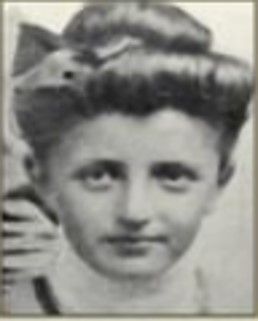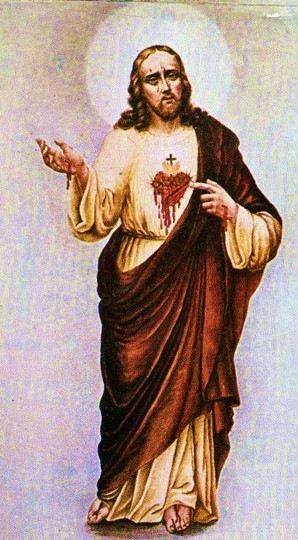Claire Ferchaud (1896-1972) came from Loublande. She was 20 years old when, in 1917, she became known for having brought a request for the consecration of France to the Sacred Heart to the attention of the French authorities. From 1922 onwards, she revealed that since childhood she had had a vision of the Perpetual Mass that Christ wanted to see celebrated in Loublande, at Les Rinfillières. In obedience and love for the Church, Claire carried the request for Perpetual Mass until her death in 1972.

Sources on Claire
Claire can be known :
- Firstly through her writings: at the request of her confessor, Clare wrote « Notes Autobiographiques », part of which has been published by Editions Téqui. Here we can discover Clare’s life as told by herself.
- Then by meeting the members of the community she founded in 1917 with the permission of her bishop, or by meeting those who knew Clare. Visiting the house where Clare was born is a privileged way of accessing this living memory, allowing you to meet members of Clare’s family and thus gain the most authentic testimony to the spirit she wished to pass on.
- Possibly by reading books about her life, or by attending lectures based on the books available. A website has recently been set up to help people find out more about her.
Life of Claire
From childhood, Clare had visions of Christ, who accompanied her upbringing from the cradle, almost daily. Claire thought she was very ordinary, and naturally believed that everyone saw Christ as she did.
Helping her parents with the work on the Rinfillières farm, she stopped going to school at the age of 7. It wasn’t until she was 13 that she realised she was alone in seeing Christ. She told her parish priest, who advised her not to think about it any more. But the apparitions continued.
In 1916, in the midst of the First World War, Christ asked Claire to go and see the President of the Republic to remind him of the request made at Paray-le-Monial to consecrate France to the Sacred Heart. After being questioned in Poitiers by her bishop, Mgr Humbrecht, and a jury of theologians, Claire went to Paris and met President Poincaré. However, the consecration she requested was refused by the French authorities.
At Christ’s request, and in expiation for France’s refusal, Claire founded a community of lay people with the agreement of Bishop Humbrecht. This was the origin of the Maison du Sacré-Coeur in Loublande.
In 1922, Claire revealed to a priest that she had had a vision since childhood, which developed more and more. Christ was asking for a Perpetual Mass to be celebrated by the Pope (or in his name) on the hill of Rinfillières, for the whole world. (NB: Clare does not seem to have been aware of this, but Saint Julienne de Cornillon had received the request to celebrate the Body and Blood of Christ by a similar means). Priests would take over from the Holy Father, so that the Mass would never stop.
In 1935, Pope Pius XI ordered that Mass be celebrated without interruption at Lourdes for three days. This pontifical initiative, which had nothing to do with Claire, nevertheless established a precedent that legitimised the request for a Perpetual Mass.

A grouping of priests for the Perpetual Mass was authorised by Pius XII in 1945, but the then Bishop of Poitiers, Mgr Mesguen, opposed it, and Pius XII did not insist. In 1964 and 1966, Paul VI, without disputing the substance of the request, considered that the project was « new » and that the time had not come. Claire died in 1972. She was buried in the municipal cemetery of Loublande. A « humble victim of atonement, she was obedient to the point of death in her love for the Church and France ». She is buried among the other expiating sisters who died before her or have since been buried.
A request for our time
However, Christ had said to Claire in 1957: « Write, so that at least men may know that I am ready to show Mercy, so that they may be informed, so that in the time of a greater tribulation, generations may remember ». We are proposing this pilgrimage in the spirit of Claire Ferchaud, and for the same reasons that led Pope Pius XI to allow the celebration of three days of uninterrupted Masses at Lourdes in 1935.